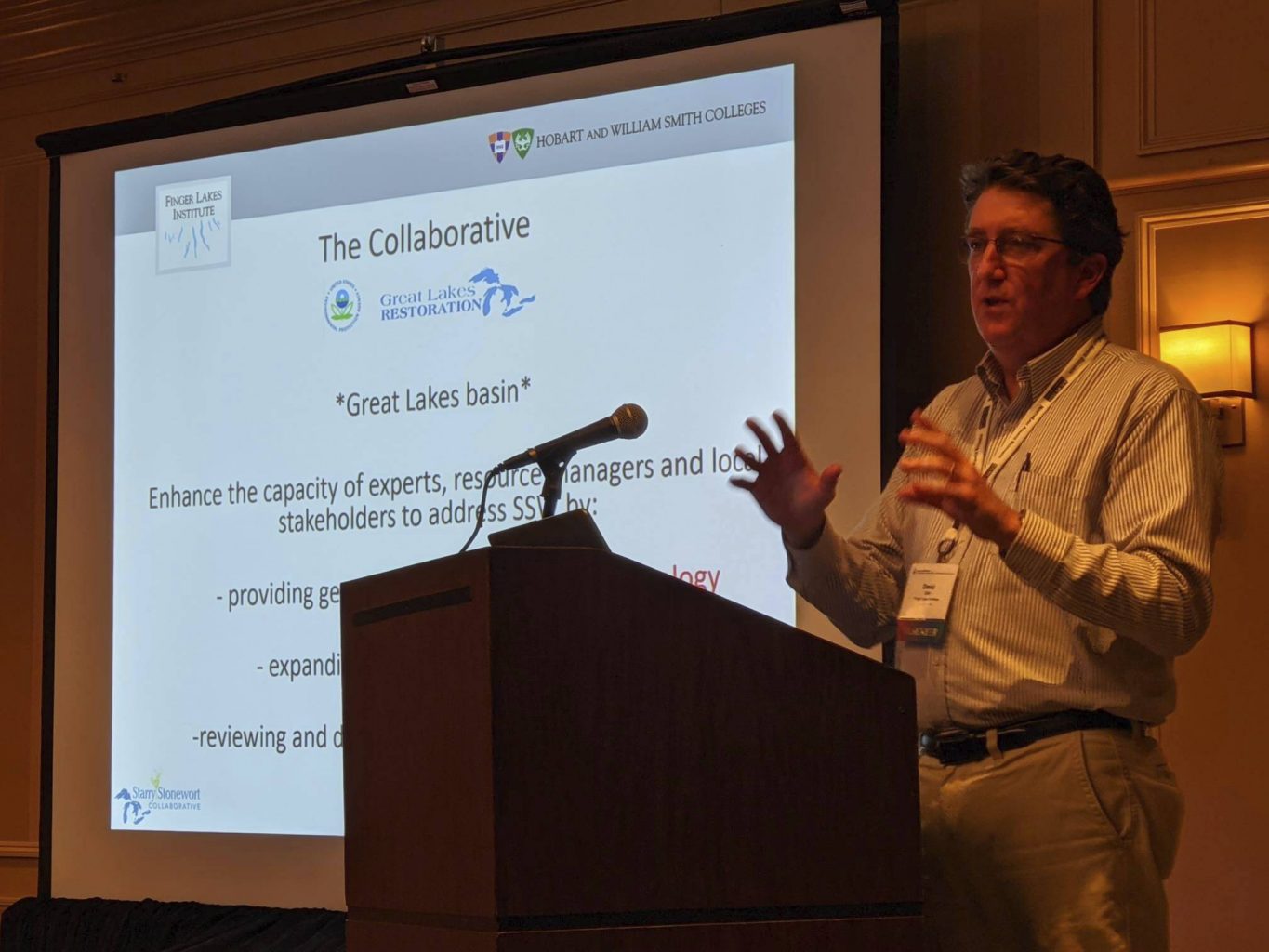About Starry Stonewort Collaborative

The Starry Stonewort Collaborative was a program that brought together and increased the capacity of researchers, collaborators and concerned citizens to further research and control the invasive aquatic species starry stonewort. Through citizen involvement and teamwork, this work can continue and help stop this harmful macroalgae.
Collaborative Goals
The Collaborative focused on three areas:
- Ecology – sharing of ongoing field work and laboratory research and analysis for better understanding of Nitellopsis obtusa characteristics and life cycles
- Outreach – providing insights into the best outreach and education strategies for community involvement in Starry Stonewort identification and reporting
- Control – assisting in gathering and sharing best management practices and techniques from all areas of the Great Lakes basin

The Collaborative had four guiding goals:
- Extensive community-level volunteer engagement and training across the basin
- Basin wide sharing of information and experiences in the control of starry stonewort
- Creation and sharing of Best Management Practices and fact sheets describing starry stonewort throughout the region
- Implementation of prevention strategies and rapid assessment and response plans

Collaborative Structure
To help us ensure the Collaborative was effective and successful we worked with a network of over forty collaborators from across the basin. This was a diverse group of people including scientists, stakeholders and resource managers who were our “eyes and ears” and helped us with outreach efforts, resource exchange and training efforts.
We also asked eight expert panelist to help guide the project, who assisted with peer review of papers, overview of best management practices, outreach assistance and provided informational webinars. Several of these experienced professionals have been studying Starry Stonewort for more than ten years!
Overall, an upside down pyramid best illustrated the conceptual structure of the Collaborative. It represents the numbers of people we were engaging in the project, but also the importance of the top level, the Citizen Scientists. Only with the continued involvement of citizens like you can we hope to stop starry stonewort.
Collaborator locations
Starry Stonewort Collaborative privacy notice
Supported by
The Finger Lakes Institute
The Finger Lakes Institute (FLI) at Hobart Williams Smith, Geneva, NY is dedicated to the promotion of environmental research and education about the Finger Lakes and surrounding environments. In collaboration with regional environmental partners and state and local government offices, the Institute fosters environmentally-sound development practices throughout the region, and disseminates accumulated knowledge to the public. Program areas include: Research, Education, Community Outreach, Economic Development.
Great Lakes Restoration
This project was funded by a grant from the Environmental Protection Agency Great Lakes Restoration Initiative.
“Committed to creating a new standard of care that will leave the Great Lakes better for the next generation”
Finger Lakes Partnership for Regional Invasive Species Management
The Finger Lakes PRISM is a cooperative partnership of diverse stakeholders from throughout the central region of New York State. It is part of a network of eight regional PRISM partnerships created by New York State through its Environmental Protection Fund. Housed in the Finger Lakes Institute at Hobart and William Smith Colleges, the Finger Lakes PRISM coordinates and directs regional resources to manage and reduce the impact of invasive species.




